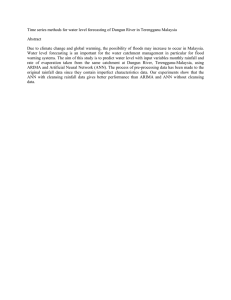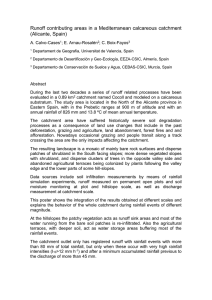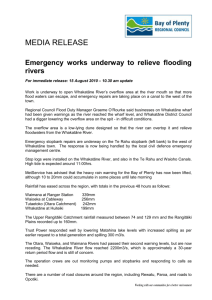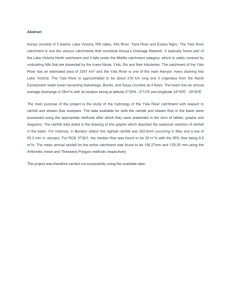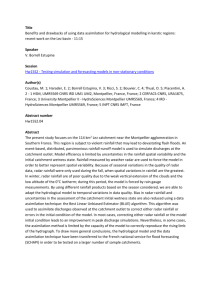Muna
advertisement
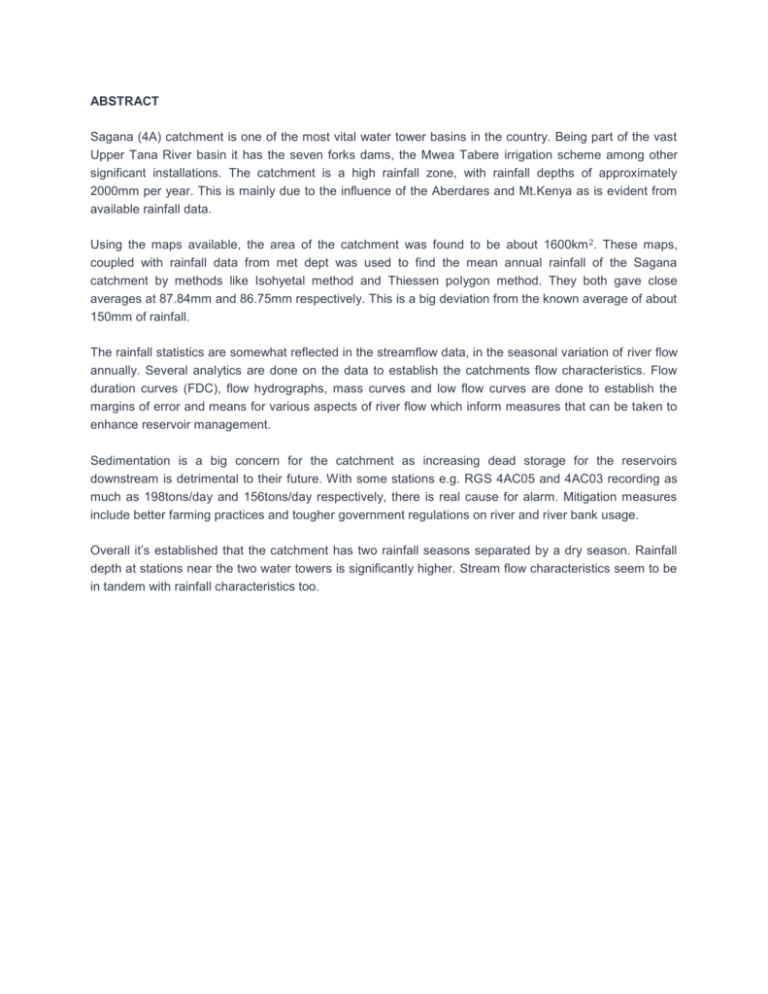
ABSTRACT Sagana (4A) catchment is one of the most vital water tower basins in the country. Being part of the vast Upper Tana River basin it has the seven forks dams, the Mwea Tabere irrigation scheme among other significant installations. The catchment is a high rainfall zone, with rainfall depths of approximately 2000mm per year. This is mainly due to the influence of the Aberdares and Mt.Kenya as is evident from available rainfall data. Using the maps available, the area of the catchment was found to be about 1600km 2. These maps, coupled with rainfall data from met dept was used to find the mean annual rainfall of the Sagana catchment by methods like Isohyetal method and Thiessen polygon method. They both gave close averages at 87.84mm and 86.75mm respectively. This is a big deviation from the known average of about 150mm of rainfall. The rainfall statistics are somewhat reflected in the streamflow data, in the seasonal variation of river flow annually. Several analytics are done on the data to establish the catchments flow characteristics. Flow duration curves (FDC), flow hydrographs, mass curves and low flow curves are done to establish the margins of error and means for various aspects of river flow which inform measures that can be taken to enhance reservoir management. Sedimentation is a big concern for the catchment as increasing dead storage for the reservoirs downstream is detrimental to their future. With some stations e.g. RGS 4AC05 and 4AC03 recording as much as 198tons/day and 156tons/day respectively, there is real cause for alarm. Mitigation measures include better farming practices and tougher government regulations on river and river bank usage. Overall it’s established that the catchment has two rainfall seasons separated by a dry season. Rainfall depth at stations near the two water towers is significantly higher. Stream flow characteristics seem to be in tandem with rainfall characteristics too.
